The Beauty of Equations Visualized With Bokeh and Datashader

Jeremy Jacobson
Lecturer
Institute for Quantitative Theory and Methods (QTM)
Emory University
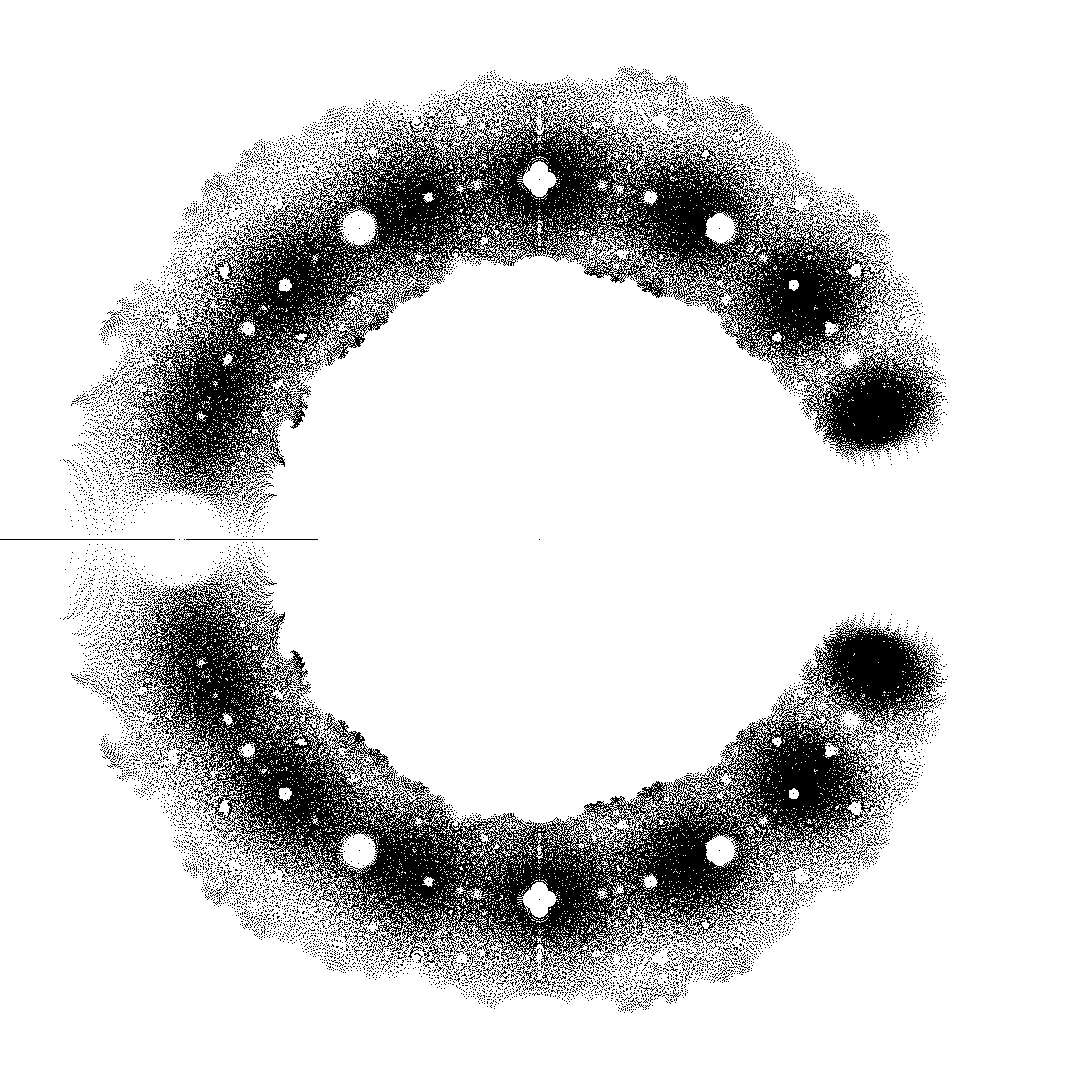



Andrew Odlyzko (formerly of Bell labs)
Professor
School of Mathematics
University of Minnesota

C TEST FOR CONVERGENCE UNLESS STAGE 3 HAS FAILED ONCE OR THIS
C IS THE LAST H POLYNOMIAL .
IF ( BOOL .OR. .NOT. TEST .OR. J .EQ. L2) GO TO 50
IF (CMOD(TR-OTR,TI-OTI) .GE. .5D0*CMOD(ZR,ZI)) GO TO 40
IF (.NOT. PASD) GO TO 30
C THE WEAK CONVERGENCE TEST HAS BEEN PASSED TWICE, START THE
C THIRD STAGE ITERATION, AFTER SAVING THE CURRENT H POLYNOMIAL
C AND SHIFT.
DO 10 I = 1,N
SHR(I) = HR(I)
SHI(I) = HI(I)
10 CONTINUE
SVSR = SR
SVSI = SI
CALL VRSHFT(10,ZR,ZI,CONV)
IF (CONV) RETURN
C THE ITERATION FAILED TO CONVERGE. TURN OFF TESTING AND RESTORE
C H,S,PV AND T.
TEST = .FALSE.
DO 20 I = 1,N
HR(I) = SHR(I)
HI(I) = SHI(I)
20 CONTINUE
SR = SVSR
SI = SVSI
CALL POLYEV(NN,SR,SI,PR,PI,QPR,QPI,PVR,PVI)
CALL CALCT(BOOL)
GO TO 50
30 PASD = .TRUE.
GO TO 50
40 PASD = .FALSE.
50 CONTINUE
C ATTEMPT AN ITERATION WITH FINAL H POLYNOMIAL FROM SECOND STAGE.
CALL VRSHFT(10,ZR,ZI,CONV)
RETURN
END
SUBROUTINE VRSHFT(L3,ZR,ZI,CONV) VRSH2230Bjorn Poonen
Claude Shannon Professor of Mathematics
Algebraic Geometry, Number Theory
Massachusetts Institute of Technology


Bjorn Poonen
Claude Shannon Professor of Mathematics
Algebraic Geometry, Number Theory
Massachusetts Institute of Technology
Trivia Question:
Producing supercomputers and beer are the two primary industries of what city?
What is
Chippewa Falls, Wisconsin


What are zeros of polynomials with 0,1 coefficients?
a x^2 + bx + c=0
ax2+bx+c=0
Example
x = \frac{-b \pm \sqrt{b^2-4ac}}{2a}
x=2a−b±√b2−4ac
The solutions, a.k.a. roots or zeros, are:
x^2 + x + 1=0
x2+x+1=0
Example (restricted coeff.)
x^2 + 1=0
x2+1=0
(a=1, b=1, c=1)
(a=1,b=1,c=1)
(a=1,b=0, c=1)
(a=1,b=0,c=1)
x^2 + x + 1
x2+x+1
x = \frac{-1 + (\sqrt{3})\sqrt{-1}}{2} = \frac{-1}{2} + (\frac{\sqrt{3}}{2})\sqrt{-1}
x=2−1+(√3)√−1=2−1+(2√3)√−1
x^2 + 1
x2+1
x = \frac{-1 - (\sqrt{3})\sqrt{-1}}{2}= \frac{-1}{2} - (\frac{\sqrt{3}}{2})\sqrt{-1}
x=2−1−(√3)√−1=2−1−(2√3)√−1
x = \frac{0-2\sqrt{-1}}{2}=-\sqrt{-1}
x=20−2√−1=−√−1
x = \frac{0+2\sqrt{-1}}{2}=\sqrt{-1}
x=20+2√−1=√−1
Hence, a finite list of roots (four in total):
How to visualize them?
Fact:
Any root of a polynomial equation can be written in the form
x = a + b \sqrt{-1}
x=a+b√−1
for some numbers a and b.
Hence, roots are represented visually by pairs (a,b) in the xy-plane.
The number a is called the 'real part' and b the 'imaginary part' of x.
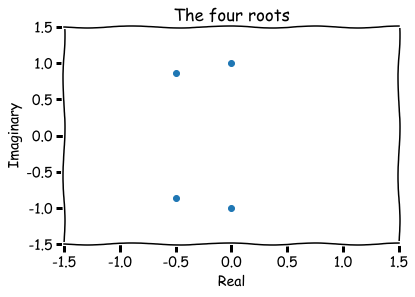
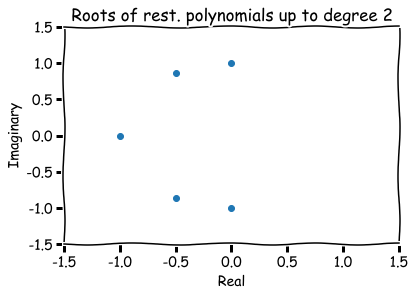
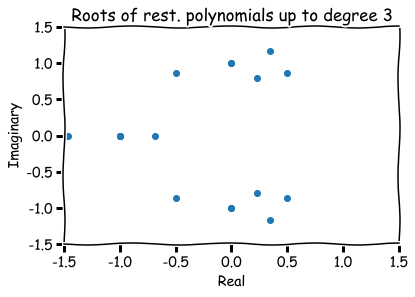

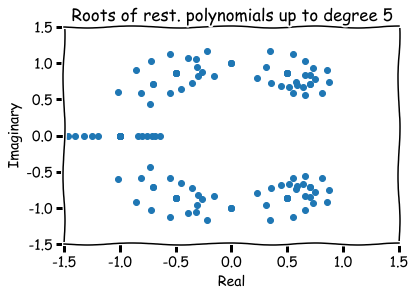
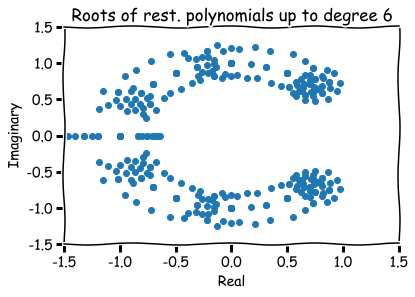
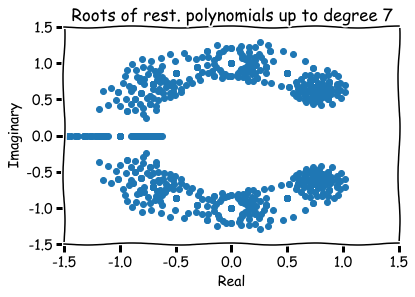



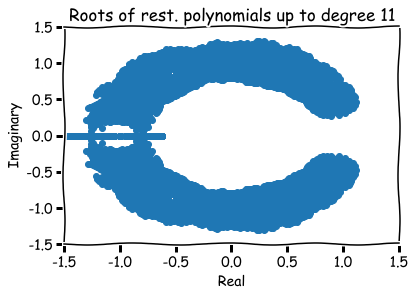
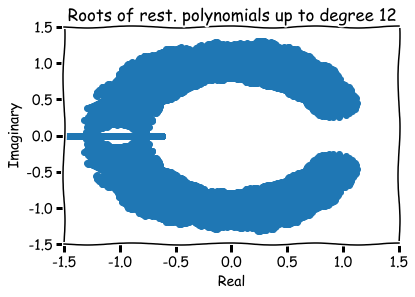
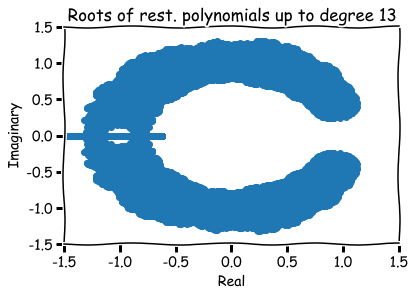

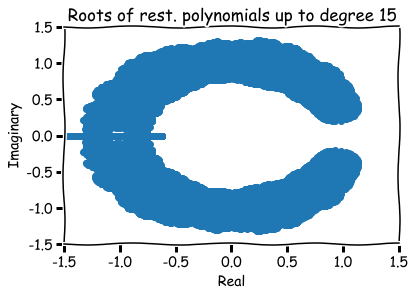

Additional references
- "A Digital Slice of Pi", W. Wayt Gibbs. Scientific American Magazine, May 2003.
- https://johncarlosbaez.wordpress.com/2011/12/11/the-beauty-of-roots/ (blog)
The Beauty of Equations Visualized With Bokeh and Datashader
By Jeremy Jacobson
The Beauty of Equations Visualized With Bokeh and Datashader
Introductory slides for the PyData-Atlanta talk given May 30th, 2017,
- 428



